ARDUINO 1.0 BRINGING IMPROVEMENTS AND CHANGES.
– October 4th, 2011
Arduino 1.0 is coming soon. The first release candidate was posted to our development site for Maker Faire NYC and is available for public download. It brings a number of improvements and changes to the software that we encourage you to test before the final Arduino 1.0 release, scheduled for the end of the month.
The Arduino development environment (IDE) has undergone a number of adjustments:
- The file extension for sketches has changed from .pde to .ino, to avoid conflicts with the Processing software (“ino” are the last three letters in “Arduino”).
- There are a new set of toolbar icons, including a checkmark icon to verify (compile) a sketch and an arrow for upload. The serial monitor icon has moved to the right of the toolbar. Also, shift-clicking the upload icon now uploads using a programmer (selected in the Tools menu). You can still enable verbose output in the preferences dialog. (Icons were designed by Nicholas Zambetti.)
- There’s a new color scheme and about image for the IDE (by ToDo.to.it).
- The name of the currently selected board and serial port are now shown at the bottom of the editor. (Code from Wiring.)
- A progress bar is displayed during compilation and upload. (Code from Wiring.)
The changes of perhaps larger practical impact, though, are those to the Arduino language. Here are some of the bigger changes:
- Serial transmission is now asynchronous – that is, calls to Serial.print(), etc. add data to an outgoing buffer which is transmitted in the background. Also, the Serial.flush() command has been repurposed to wait for outgoing data to be transmitted, rather than dropping received incoming data.
- The behavior of Serial.print() on a byte has been changed to align it with the other numeric data types. In particular, it will now print the digits of its argument as separate ASCII digits (e.g. ’1′, ’2′, ’3′) rather than a single byte. The BYTE keyword has been removed. To send a single byte of data, use Serial.write() (which is present in Arduino 0022 as well).
- The Serial class (as well as other classes inheriting from Stream, like EthernetClient, SoftwareSerial, Wire and more) now contains functions for parsing incoming data, based on the TextFinder library by Michael Margolis. They include find() and findUntil() to search for data, parseInt() and parseFloat() for converting incoming characters into numeric values, and readBytes() and readBytesUntil() for reading multiple bytes into a buffer. They use a timeout that can be set with the new setTimeout().
- The SoftwareSerial class has been reimplemented, using the code originally written for the NewSoftSerial library by Mikal Hart. This allows for multiple simultaneous instances, although only one can receive at a time.
- Support has been added for printing strings stored in flash (program memory) rather than RAM. Wrap double-quoted strings in F() to indicate that they should be stored in flash, e.g. F(“hello world”).
- The String class has been reimplemented as well, by Paul Stoffregen. This new version is more memory-efficient and robust. Some functions which previously returned new string instances (e.g. trim() and toUpperCase()) have been changed to instead modify strings in place.
- Support for DHCP and DNS has been added to the Ethernet library, thanks to integration by Adrian McEwen. Most classes in the Ethernet library have been renamed to add a “Ethernet” prefix and avoid conflicts with other networking libraries. In particular, “Client” is now “EthernetClient”, “Server” is “EthernetServer”, and “UDP” is “EthernetUDP”. A new IPAddress class makes it easier to manipulate those values.
- The UDP API has been changed to be more similar to other libraries. Outgoing packets are now constructed using calls to the standard write(), print(), and println() functions – bracketed by beginPacket() and endPacket(). The parsePacket() function checks for and parses an incoming packet, which can then be read using available(), read(), and peek(). The remoteIP() and remotePort() functions provide information about the packet’s origin. (Again, thanks to Adrian McEwen for the implementation.)
- The Wire library has also been modified to use the standard read() and write() functions instead of send() and receive(). You can also use print() and println() for outgoing data.
- The SD library now supports multiple simultaneous open files. It also provides the isDirectory(), openNextFile(), and rewindDirectory() functions for iterating through all the files in a directory. (Thanks to Limor Fried.)
- There are some other small additions that will be documented in the reference updates for Arduino 1.0.
Finally, a few other notes of particular concern to those developing libraries or otherwise interested in the internals of the Arduino software:
- The WProgram.h file, which provides declarations for the Arduino API, has been renamed to Arduino.h. To create a library that will work in both Arduino 0022 and Arduino 1.0, you can use an #ifdef that checks for the ARDUINO constant, which was 22 and is now 100.
- The write(), print(), and println() functions in Stream now return a size_t (instead of void). This indicates the number of bytes actually written by the function. Any classes that inherit from Stream will need to change accordingly. Additionally the write(str) function has been given a concrete implementation – it calls write(buf, len) – so sub-classes don’t need to (and shouldn’t) implement it.
- There are new abstract base-classes for Client, Server, and UDP to provide portability across networking libraries.
- The pin definitions for the Arduino boards (i.e. the mappings from pin numbers to port register / bit pairs) is now stored in a sub-folder of a new variants/ folder in the hardware folder. The variant to use for a given board is specified by the BOARD.build.variant preference in the boards.txt file.
- The new, variant-specific pins_arduino.h files now provides additional macros with information about the characteristics of the board (e.g. the locations of the SPI and TWI pins, and the number of digital and analog pins).
- The avrdude included with the Mac and Windows versions of the Arduino software has been upgraded to avrdude 5.11 (from an Arduino-specific version of avrdude 5.4). The software now uses the “arduino” programmer type in place of “stk500v1″ for uploading to most Arduino boards.
Please try out the release candidate and give us feedback. If you find a bug or a specific issue that needs addressing, please open a new issue on the Google Code issue list. For more general discussion, see the developers mailing list or the suggestions forum.
If you develop an Arduino library, we encourage you to try it out with the Arduino 1.0 release candidate, as you’re likely to find some things that will stop it from compiling. The fixes should be straightforward, so please open an issue or contact the developers list if you have any problems.
Again, we’re hoping to do the final Arduino 1.0 release at the end of the month, so there’s not much time to do fixes or make further changes. Your help and understanding is greatly appreciated. And, don’t worry, there are plenty more versions of the Arduino software to come!
ARDUINO BASED KENBAK COMPUTER
– October 3rd, 2011
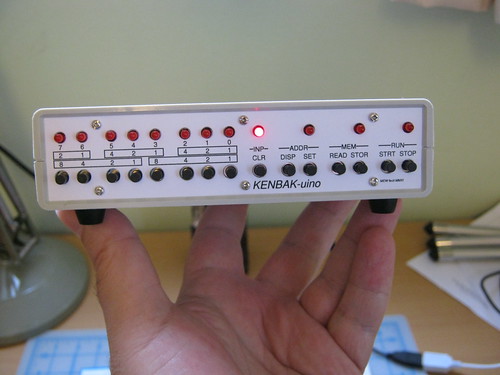
Kenbak computer (claimed to be one of the first personal computer – 1971) has come back from the shadows of the past.
I’d been thinking for a while that emulating an old-school switches-and-lamps computer would be a fun Arduino project, but had stalled looking at things like the Altair 8800 with its 30+ lights and 20+ switches. However, when I stumbled upon the Kenbak I thought it was something I could pull off as my first real Arduino project. Naturally I called it the KENBAK-uino.
This is the end-product, it can be programmed via the buttons on the front panel and show outputs on the LEDs. It’s a faithful emulation of the original CPU but with a few enhancements thrown in like pre-loaded sample programs and access to a real time clock.
VIENI A TROVARCI A ROBOTICA 2011
– October 3rd, 2011

Massimo interverrà all‘Arduino Day organizzato all’interno di Robotica 2011. Oltre alle presentazioni di Davide Canepa [Scuola di Robotica] e Leonardo di Cosmo [Discienza] vari utenti Arduino (scuole e singoli) avranno la possibilità di mostrare / presentare il loro progetto [Programma]. (scrivi a info (chiocciola) scuoladirobotica.it partecipare allo show-case). Arduino parteciperà attivamente a questa edizione di Robotica 2011 con uno stand. Veniteci a trovare per avere maggiori informazioni su Arduino e la didattica, sperimentare con vari progetti in esposizione e partecipare alle attività organizzate durante la fiera.
via [Robotica 2011]
ARDUINO TO IPHONE GALVANIC SKIN SENSOR
– September 29th, 2011

Interesting Workshop at ISEA 2011 in Istanbul led by Anna Dumitriu and Tom Keene with Alex May. The aim of the workshop is building and calibrating iPhone compatible/connectable Galvanic Skin Response Sensors (GSR) to record subtle changes in emotion.
This very personal sensor data will then be shared online. Participants will also collaborate to develop a networked performance intervention to take place at ISEA 2011 that engages with the social benefits and ethical implications of disclosing such personal information as arousal levels within the public realm.Participants will learn to solder and connect their own GSR sensors, connect them to their iPhones and share their sensor data online. There will be a discussion of the implications of this technology and the increasing issues of privacy as pervasive computing technology is increasingly able to record and reveal personal details. Finally participants will work with the workshop leaders to improvise, plan and rehearse an intervention performance work that will be performed at the end of the second day. This performance may be very subtle and not immediately obvious to any audience members that may be around, again playing with ideas of what we do and do not reveal to those around us.
We want a report!
MASSIMO INTERVIEWED FOR IXDA AWARDS
– September 27th, 2011
[Jennifer Bove] interviewed Massimo in the series of portraits she is making to introduce the IxDA awards. BTW, don’t miss the chance to join, the deadline has been post-poned till October the 1st.
1- What is your favorite product, digital or otherwise, to use, and why?When I was 8 years old my dad gave me a Braun Lectron Electronics Kit. It was packaged like a book. On the left side there was an actual book you could pop out that explained how electronics work using hand-drawn bubbles that kids could understand, followed by very clean and simple instructions on how to assemble the modules. Then on the right there was a play area made of metal, where you could make various projects and then neatly store away the building blocks when you were done. You could just close up the book afterwards and put it on the book shelf.
ARDUINO LIBRARIES CENSUS AND REPOSITORY
– September 26th, 2011
As we are approaching to the first official Arduino 1.0, we thought we could take some time to understand better the different libraries for Arduino out there including the state of compatibility with 1.0.
Massimo on the [Forum]:
At the moment , finding a library for Arduino is quite complex for a user (especially for beginners) because there is no official registry of libraries and some these libraries are abandoned although they might still be useful with some maintenance.As part of the current effort to open up as many parts of the Arduino process as possibile we have thought about how to improve the situation and here are some actions undertaken right now:1. we are working on a database of every Arduino library available. This will be published on our website as soon as it’s done. In the meantime library authors can help us by entering their library in the “database” through this linkPlease add your library specifying all the required info so that we can contact you in case we need more info.
The only requirement is that the library must run on at least one of the boards listed in the Arduino IDE.2. We have created a new repository for Arduino Libraries on github available here: https://github.com/arduino-libraries
we encourage every library author to migrate their code there (especially if they are not using a sourcecode repository) . We’ll create projects for each library managed by the original library author. This will allow each library to have a documentation page and an issue management page.
In the future we expect this repository to be part of a system that will make it very easy for the users to select and install libraries directly from the ide being warned of any update available for the ones they currently have installed.It’s a bit of a large project in a way but in the long run it will create a nice repository of very useful code.I hope you will join this exciting project!!!As usual comments and suggestions are welcome.
MILKYMIST AND ARDUINO – A WORKSHOP
– September 23rd, 2011

Sebastien is the creator of one of the most interesting FPGA platforms I have seen recently. I posted something about it last year. Back then he was just prototyping his boards. Currently the OSHW design can be found at different retailers and it is so stable that can be used for production of visuals and art installations. He named it Milkymist and is now promoting it around the world.
The Milkymist One is an open hardware live video synthesizer. Connect a camera and a videoprojector, press the power button, and seconds later, everything you film becomes live psychedelic effects of color and light. Point the camera at a dancer on stage, at people attending your party, at toys, use UV-glow paint… there are no limits to creativity! If no camera setup is available, the Milkymist One can produce purely generative effects which react to the ambient sound, making it an ideal option for music bands, clubs and party organizers who want a turnkey solution for simple visual effects.
Lekernel, as you will find him on email lists and the like, has even left a port for devices to send control commands over serial port. One of his examples includes using an Arduino board to read any kind of sensor and send the data encoded as MIDI to the Milkymist. You can take part of a workshop with Sebastian using this technique. Take a look at his website for dates. The next one will be in Berlin on October 1st. It is free as in free beer!
References:
About the workshop:
Date: October 1st, 2011
Time: to be announced, check www.milkymist.org
By: Sébastien Bourdeauducq, Fabienne “fbz” Serriere
Price: free, just drop in
Duration: 4 hours (but feel free to come and go)
Location: betahaus
Prinzessinnenstraße 19-20
10969 Berlin
U-Bahn: Moritzplatz
Time: to be announced, check www.milkymist.org
By: Sébastien Bourdeauducq, Fabienne “fbz” Serriere
Price: free, just drop in
Duration: 4 hours (but feel free to come and go)
Location: betahaus
Prinzessinnenstraße 19-20
10969 Berlin
U-Bahn: Moritzplatz
ARDUINO IS YOU
– September 20th, 2011
Maker Faire New York is over and we are seeing a lot of reports and reviews about the new products Arduino has announced, we’re sincerely impressed by the amount of positive feedback and offers of collaboration that we have received.
We are releasing a two part video extract of my speech on saturday at Maker Faire New York. The title of the speech is “what’s ahead for Arduino” and it describes the new products we’ve already announced on friday.
Yesterday we’ve had the pleasure of being slashdotted for the first time in our history with the side effect of being mentioned on a lot of websites. In particular what caught my attention is this article by Steve Rosenboaum on theHuffington Post entitled “What Barack Obama Could Learn From Maker Faire” :
Arduino is the kind of innovation eco-system that The White House could support today. Much like the President’s Fitness Challenge drove health and set goals for the nation, it’s easy to imagine an Arduino White House Challenge that would give young people the goals and rewards to drive big ideas into the economy. Today Dean Kamen’s US First Robotics teams are doing that in high schools across the country. And yet President Obama stays almost entirely silent on technology as if somehow the future of America is about us embracing and revitalizing the past.
Education and Community have always been at the core of Arduino….
Another big deal was the announcement that Radio Shack is going to be stocking Arduino in its thousands of stores. Everybody I met was tremendously excited about this (like we have been throughout the negotiation) and a momentous event for an open source project.
We closed our presentation with “Arduino is You”, this is something we like to remind everybody because the community is the lifeblood of Arduino. Give yourself a round of applause like we did in New York.
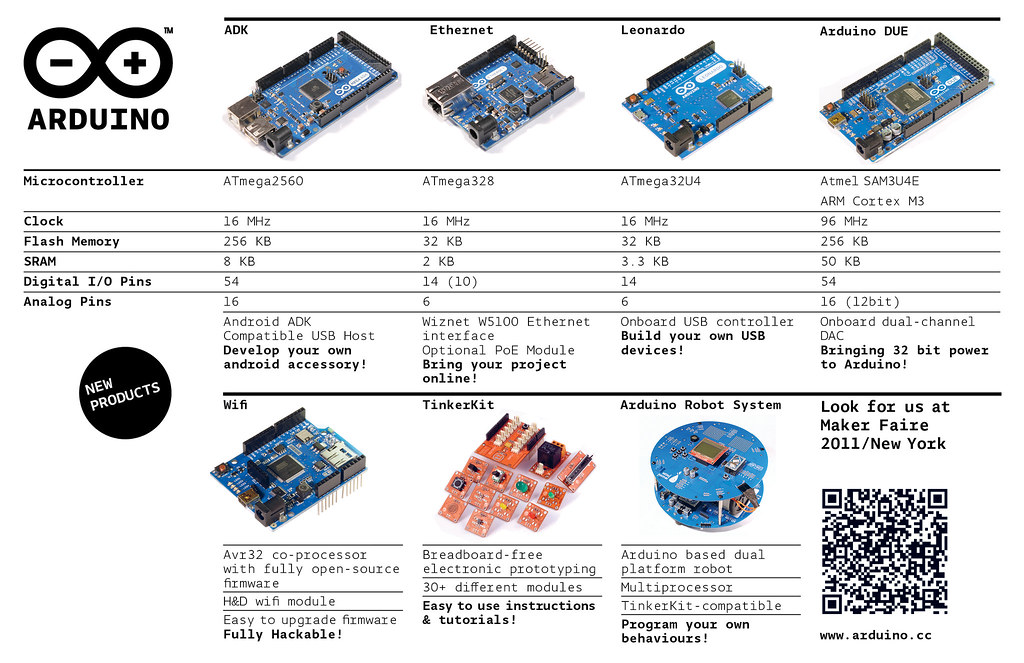
SHOWING ELECTRONICS IN PUBLIC? BE CAREFUL!
– September 20th, 2011
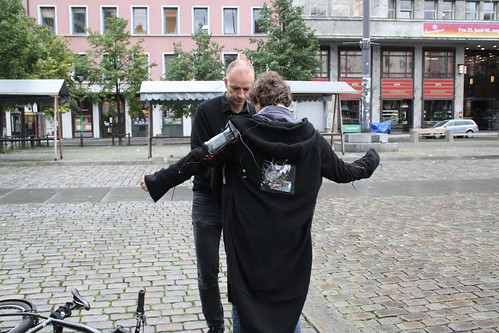
Stahl adjusting the body suit
Stahl Stenslie, Norwegian artist, PhD, and professor at the Oslo School of Architecture, has been working with the guys at 1scale1 in making a wearable device for about a year. Prototype’s last version uses an Arduino ADK together with an Android phone. It is a location based sculpture + soundscape. When reaching a certain place, the sound starts playing binarual sounds and an array of motors embedded in the garment, a coat in this case, will give you physical feedback.
The project can be named Sense Memory [...] the binaural sounds and haptic patterns were made as a response of the 22/7 terror.
However, while trying out the coat at Oslo’s main square, they got approached by the police:
[They] held us in custody on the spot for half an hour, positioning themselves around and behind us as if we were expected to do something violent towards them. It was all a pretty violent experience for us. [...] Interesting they would accuse us for being terrorists and potential suicide bombers. Our prime minister called for a more open society, a society with more democracy and creativity. But the police seem determined to go ahead with their own agenda.
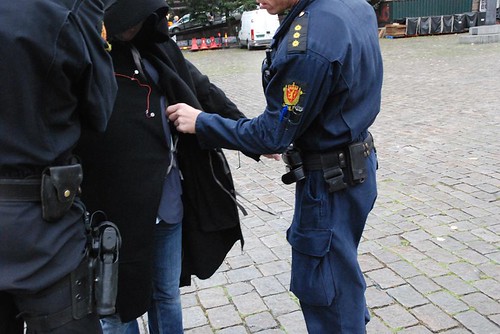
Police stopping Stahl and his partner
I have not been contacted by the police for an interrogation yet. But they said we had been reported – which again means they somehow want to punish us.
The main newspaper in Norway had announced the event in an article, the day before. However, that wasn’t enough to convince the police about their non-violent intentions.
Our show was therefore announced publically as well. Not that it matters for the police, but, hey, ask before you shoot…
Stahl closed the call with a statement about the current state of arts and the fear generated by terrorism and violence in any form all around the world:
Concerning the use of new, experimental media: if you want to use your handheld device, use a different design of your clothing like our haptic bodysuit or otherwise behave differently than ‘normal’ people, well, you’re most likely a terrorist. That’s the impression you get.
I seriously hope court will dismiss any charges on Stahl and his partner regarding this matter. 1scale1 worked really hard in trying to put together a meaningful and enjoyable experience for the audience. It is really sad it turns out this way.
Check all the pictures we got from this case clicking here.
BREAKFAST AT ARDUINO
– September 17th, 2011
For the second year in a row we decided to announce our new products at Maker Faire in NYC.
Tomorrow morning, if you come to the Arduino tent, you will be able to see:
Arduino 1.0, we finally froze the Arduino API, the IDE and the layout of the boards. We’ve made some minor additions to the Arduino connectors to make them more flexible. Tomorrow you will be able to download the release candidate and in 1 month of frantic testing with the community, the platform will be ready and stable.
Arduino Leonardo, a low cost Arduino board with the Atmega32u4. It has the same shape and connectors as the UNO but it has a simpler circuit. On the software side it has a nifty USB driver able to simulate a mouse , a keyboard, a serial port (with more drivers coming later). As usual for Arduino, everything will be released as open source (Core, Bootloader, Hardware).
Arduino Due, a major breakthrough for Arduino because we’re launching an Arduino board with a 32bit Cortex-M3 ARM processor on it. We’re using the SAM3U processor from ATMEL running at 96MHz with 256Kb of Flash, 50Kb of Sram, 5 SPI buses, 2 I2C interfaces, 5 UARTS, 16 Analog Inputs at 12Bit resolution and much more.
Instead of just releasing the finished platform we are opening the process to the community early on. We’re going to be demoing the board and giving away some boards to a selected group of developers who will be invited to shape the platform while it’s been created. After Maker Faire, we will begin selling a small batch of Developer Edition boards on the Arduino store (store.arduino,cc) for members of the community who want to be join the development effort. We plan a final and tested release by the end of 2011
Arduino Wifi Shield. It adds Wi-Fi communication capabilities to any Arduino. Instead of using any of the classic WiFi modules on the market we wanted to have something that will provide the maximum level of hackability to the user. The shield is based on a wifi micro module made by H&D Wireless coupled with a powerful AVR32 processor that carries the full TCP-IP stack leaving room to add your own protocols and customisations. We’ve also worked hard to make sure that you will be able to migrate your code from the Ethernet Shield with minor changes.
We’re also going to show some prototypes of new platforms we’ve been working on: We have robots, new IDEs and more.
It has been a crazy few months and we want to thank ATMEL very much the support that we got on all the new products.
Come over to Maker Faire and have a look for yourself!



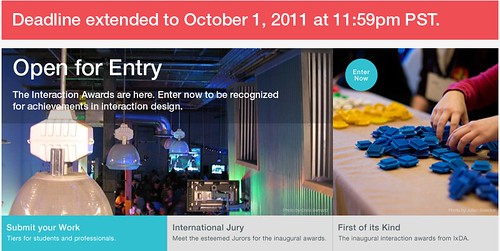
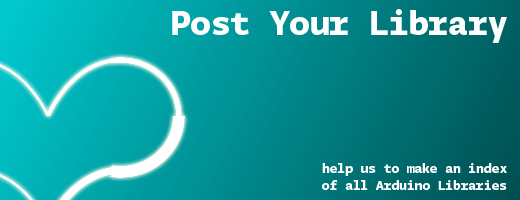







0 comentarios:
Publicar un comentario